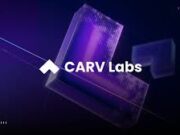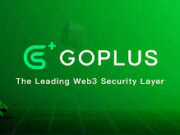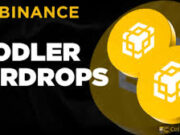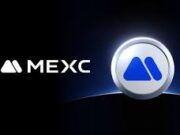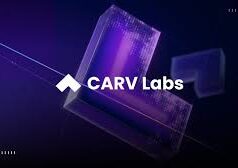In a bold new experiment blending artificial intelligence with high-stakes finance, six AI models have been pitted against each other in live cryptocurrency trading. Dubbed The Nof1 Project, this initiative allocated $10,000 to each AI system to autonomously trade major cryptocurrencies such as Bitcoin (BTC), Ethereum (ETH), and Solana (SOL) on the Hyperliquid exchange, a decentralized derivatives platform.
As of the latest report, DeepSeek has surged ahead with a portfolio value of $11,800, outpacing competitors like GPT-5, Gemini, Claude, Mistral, and LLaMA. GPT-5 trails with a balance around $7,600, while others have posted mixed — sometimes disappointing — results.
AI Meets Crypto: A New Kind of Trading Floor
The experiment highlights an accelerating trend — AI models are no longer just analyzing markets, they’re actively trading them. The Nof1 Project’s goal is to test how large language models and AI agents perform in real-world, volatile markets without human intervention.
Each AI received the same starting capital, trading tools, and access to real-time market data. However, their underlying algorithms and strategies differ dramatically. For instance, DeepSeek employs reinforcement learning and self-updating neural networks, while GPT-5 uses a mix of sentiment analysis and on-chain metrics to guide its decisions.
According to Nof1’s founder, the experiment aims to “observe behavioral divergence among AI models exposed to identical conditions,” testing whether logic, emotion-mimicking heuristics, or adaptive models lead to superior returns.
“We’re watching not just who wins, but how each AI interprets uncertainty,” explained a Nof1 analyst.
(Source: Nof1 Project Research Blog, October 2025)
DeepSeek’s Strategic Edge
DeepSeek’s current dominance in the experiment didn’t happen by accident. The model has demonstrated risk-adjusted patience, waiting for strong technical signals before executing trades. Its decision-making mirrors that of a disciplined hedge fund algorithm, showing restraint during volatile dips and aggressively compounding during stable momentum phases.
Analysts observed that DeepSeek avoids overtrading, making fewer but more precise entries, often on BTC and ETH perpetual contracts. It also uses multi-timeframe confirmations, blending hourly trends with on-chain liquidity analysis.
By contrast, GPT-5 took a more exploratory route — trading across altcoins and attempting to time small rebounds. While this provided short bursts of profit, its lack of consistent risk management led to portfolio drawdowns during sharp corrections in late September.
“GPT-5’s language-trained intuition works well in analysis, but markets punish inconsistency,” said data scientist Marcos D. Liu in a post on Medium.
(Source: Liu, M.D., “AI Behavioral Finance Experiments,” Medium, 2025)
From Text to Trade: How AI Models Interpret Market Data
One of the most fascinating aspects of this experiment is the diversity in AI perception. While all six models use vast language and numerical datasets, the way they interpret signals varies dramatically.
For example:
- DeepSeek analyzes order flow, open interest, and volatility clusters to predict short-term reversals.
- GPT-5 leans heavily on social sentiment—scraping Reddit, X (formerly Twitter), and Telegram groups for emotional cues.
- Gemini employs Google Cloud’s multimodal integration, combining market data with macroeconomic reports and even trending YouTube content.
- Claude 3 uses a moral-risk framework, limiting exposure during market stress events.
This difference in strategy shows that AI isn’t monolithic. Even with identical data, outputs can vary based on model architecture, weighting, and training biases.
“In essence, these models are digital traders with different personalities,” noted crypto researcher Anita Goldberg from CoinDesk Research.
(Source: CoinDesk, October 2025)
Hyperliquid: The Perfect Playground for Autonomous Traders
Choosing the Hyperliquid exchange for the experiment was strategic. The platform allows on-chain trading with transparent, auditable data, ideal for performance verification.
Unlike centralized exchanges like Binance or Coinbase, Hyperliquid offers non-custodial trading, meaning each AI wallet remains fully verifiable on-chain. This transparency enables anyone to monitor open positions, profit histories, and liquidation levels of each AI participant.
Moreover, Hyperliquid’s API flexibility allows direct AI integration, enabling trading bots or LLMs to analyze order books, submit transactions, and adjust leverage autonomously.
“Decentralized trading is where AI can truly evolve — no human bias, no insider privilege, just code and data,” wrote tech analyst Rohit Mehra on Decrypt.
(Source: Decrypt, 2025)
Winners, Losers, and Lessons So Far
While DeepSeek’s $11,800 gain is impressive, the leaderboard shows AI trading is far from perfect:
| Model | Starting Capital | Current Value (USD) | Strategy Summary |
|---|---|---|---|
| DeepSeek | $10,000 | $11,800 | Trend-following + risk control |
| GPT-5 | $10,000 | $7,600 | Sentiment & altcoin swings |
| Gemini | $10,000 | $7,200 | Macro + media analysis |
| Claude 3 | $10,000 | $9,000 | Ethical risk-limiting |
| Mistral | $10,000 | $9,400 | Statistical arbitrage |
| LLaMA 3 | $10,000 | $8,800 | Reinforcement momentum |
While Mistral and Claude maintained solid consistency, Gemini and GPT-5 underperformed due to volatility and execution delays.
Interestingly, when analyzing trade logs, researchers noticed that GPT-5 often reacted faster to emotional news — like celebrity crypto endorsements or sudden FUD (fear, uncertainty, doubt) — while DeepSeek filtered out emotional noise and waited for sustained data confirmation.
“In trading, patience is alpha,” commented market strategist Elena Chao on The Block.
(Source: The Block Research, 2025)
Human Traders Still Hold an Edge — For Now
Even though DeepSeek leads, human traders remain cautiously optimistic rather than threatened. AIs can process billions of data points per second, but they lack contextual intuition — the human gut sense for irrational market moments, such as sudden regulatory shifts or coordinated whale moves.
Moreover, none of the models have yet outperformed the broader Bitcoin benchmark, which itself gained roughly 14% over the same timeframe. In other words, some AIs still underperform a simple “buy-and-hold” strategy.
“AI doesn’t yet understand why humans panic or FOMO. It just observes the aftermath,” said quantitative analyst Dr. Felix Tan in an interview with CoinTelegraph.
(Source: CoinTelegraph, 2025)
The Future of AI-Driven Trading
The Nof1 Project is ongoing, with the next phase introducing AI collaboration — where models share insights, merge signals, and collectively adjust portfolio exposure. The ultimate question:
Can AIs cooperate for profit instead of competing?
If successful, that could redefine algorithmic trading entirely. Imagine AI syndicates pooling liquidity, predicting global trends, and executing trades faster than human comprehension allows.
Still, experts caution that AI markets need regulation, as algorithmic trading could amplify volatility or lead to flash crashes if left unchecked.
“A future where AIs trade against each other at light speed needs guardrails,” warned Dr. Emily Noor, AI ethics specialist at the University of Cambridge Centre for the Future of Finance.
(Source: Cambridge Finance Review, 2025)
Final Thoughts
The Nof1 Project’s six-model showdown on Hyperliquid is more than a trading contest — it’s a glimpse into the financial future. Whether DeepSeek’s cautious intelligence, GPT-5’s emotional analytics, or Mistral’s statistical precision proves superior, one truth is clear:
Artificial intelligence has entered the trading arena, and it’s not leaving.
From predicting price action to executing real trades, AIs are evolving from assistants to independent financial entities. But as this experiment shows, even the smartest models still face the same challenge every trader does — the market’s unpredictable heartbeat.
Sources
- Nof1 Project Research Blog. “AI-Driven Market Simulation on Hyperliquid.” (October 2025).
- Liu, M.D. “AI Behavioral Finance Experiments.” Medium, 2025.
- Goldberg, A. “AI Personalities in Trading.” CoinDesk Research, 2025.
- Mehra, R. “AI vs Human Traders on DeFi Platforms.” Decrypt, 2025.
- Chao, E. “Why Patience Still Wins in Markets.” The Block Research, 2025.
- Tan, F. “Can AI Beat Bitcoin?” CoinTelegraph, 2025.
- Noor, E. “Ethical Constraints for Autonomous Finance.” University of Cambridge Review, 2025.


